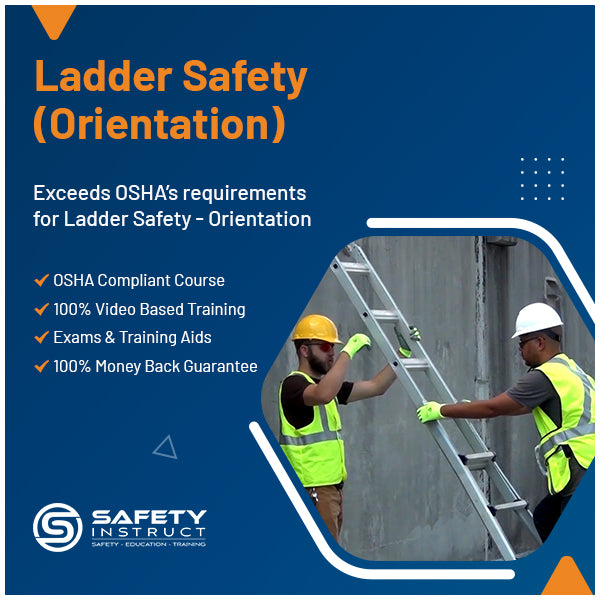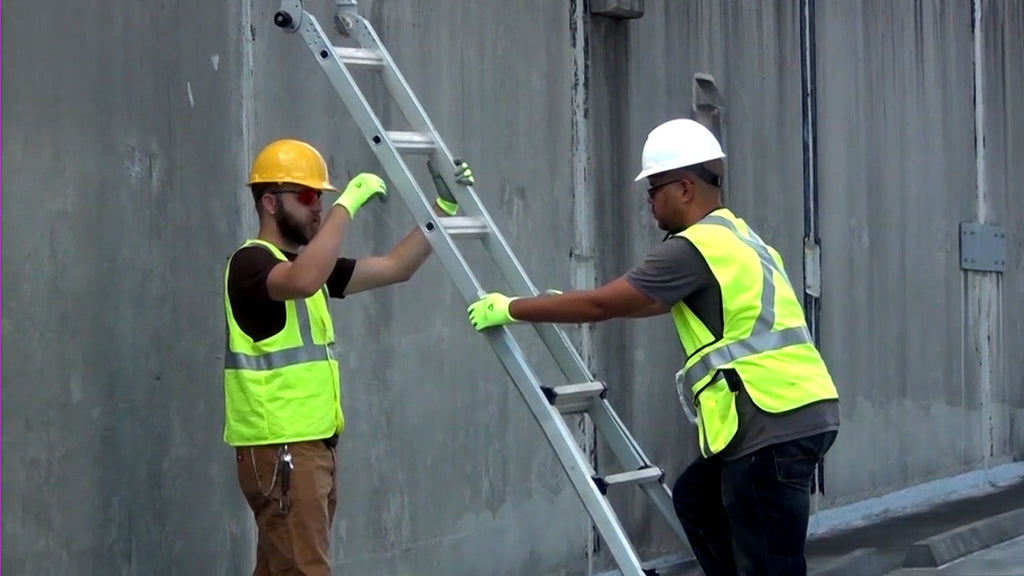No Products in the Cart
Click Here to Schedule a FREE Consultation
Phone: 866-943-6887 Email: sales@safetyinstruct.com



Ladder safety is of utmost importance to prevent accidents at work or home. It begins with selecting the right type of ladder for the task and placing it on a stable, level surface. Always be mindful of weight capacities, maintain three points of contact while climbing, and inspect ladders for damage regularly. Awareness of environmental factors and proper training further enhance ladder safety, reducing the risk of accidents and ensuring safe access to elevated areas.
Types of Ladders
Ladders come in various types, each designed for specific tasks. Step ladders are self-supporting and great for household chores, while extension ladders are versatile for outdoor jobs. Platform ladders provide stability, articulating ladders are highly adjustable, and line ladders are specialized for industries like telecommunications. Telescoping ladders are portable, sectional ladders offer various heights, and pole ladders are used for vertical tasks. Choosing the right ladder type is crucial for safety and efficiency in different settings.
Ladder Placement
Safe ladder placement is crucial for preventing accidents when working at heights. On flat surfaces, ensure that the ladder's feet are securely spread out, forming a stable triangle of support. When leaning a ladder against a wall, maintain the correct angle, and have someone hold it from below, especially as you climb higher. For ledges or roofs, follow the ladder angle formula, extend the ladder securely, and ensure an overhang of at least three feet beyond the contact point. A helper is invaluable for ladder stability, particularly when working at greater heights or on unstable surfaces, making proper ladder placement a key aspect of safety in various settings.
Ladders and Loads
Ladder and load management is a crucial aspect of ladder safety, as it ensures stability and prevents accidents. Keeping both hands free for secure ladder gripping is vital while on a ladder, and tools should be carried using tool belts or pouches attached to the ladder. For larger or heavier items, it's safer to have a coworker pass them to you on the ladder or securely fasten them to your body, and preventive measures like tethers, lanyards, and maintaining a clear work area reduce the risk of falling objects, enhancing safety when working at heights.
Accident Prevention
Accident prevention is a top priority in ladder safety. Start by conducting a thorough ladder inspection, considering specific criteria based on the ladder's material. Maintain a healthy physical and mental condition when using ladders, adhere to safe climbing practices, and avoid placing ladders in high-traffic areas. By following these guidelines, you contribute to a safer working environment, protecting both yourself and those around you.


